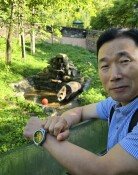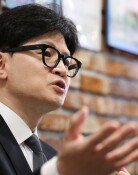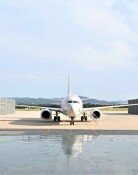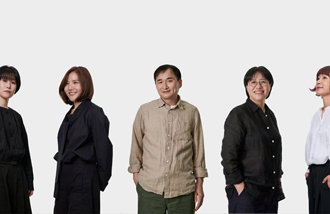Pres. Lee viewing of Buddhist relic
Pres. Lee viewing of Buddhist relic
Posted February. 06, 2011 11:06,
In 1908, Paul Pelliot, a French scholar of Asia, discovered a rolled sheet of transcript that did not show the name of its author at an ancient stone cave in Dunhuang, China. This was the moment "Wang Ocheonchukguk Jeon (Memoir of the Pilgrimage to the Five Regions of India)" written by the Venerable Hyecho of the ancient Shilla Dynasty made its public debut. Pelliot himself downplayed the book, saying, It lacks literary value like The Journey of Faxian to India or detailed descriptions like the epic novel Journey to the West by Xuanzang. Many scholars, however, highly value the Buddhist monk Hyecho`s book for describing India in the eighth century.
President Lee Myung-bak visited the Silk Road and Dunhuang" exhibition at the National Museum of Korea in Seoul Wednesday, and viewed Buddhist relics including the memoir. It is amazing and a great thing to have a great monk like the Venerable Hyecho in our Buddhist history, the president said, adding, I feel very proud. President Lee`s visit to the exhibition despite his busy schedule conveys a message of sincerity deeper than sending a congratulatory message on the Buddhas Birthday. His comments on Hyecho also suggested hints of friendliness toward Buddhism.
Korea`s first President Rhee Syng-nam, a Protestant Christian, often visited the Buddhist temple Munsu, a place his mother used to frequent. A Buddhism reform drive that got Korean Buddhism to focus on monks would not have been possible without his support. Rhee himself wrote the calligraphy on the hanging board Hyein-daedoryang (Great Temple of Hyein) at Haein Temple. In contrast, President Lee caused tension with the Buddhist community by saying, Presenting Seoul to God as Seoul mayor and came under fire for appointing members of his church to ranking government posts in his administration. Buddhist temple data was also omitted from the governments traffic information system and the budget for Buddhist temple stays also angered the Buddhist community, though he was not involved with these two moves. For this reason, President Lee seeing Hyecho`s travel journal in person is all the more noteworthy.
The legacy of Korean Buddhism is part of Koreas tradition and culture regardless of religion. Hyecho, who was born in the Shilla Dynasty, studied in China and visited India, could be considered Koreas first cosmopolitan more than a Buddhist monk. His journal contains a poem on homesickness with the lines, My country lies in the northern corner of the sky, this country lies west of the end of land, there are even no geese in southern China, and who will convey my message to Gyeongju (Shilla`s capital)? So it is only natural for the president to greet Hyecho, who died abroad despite his deep homesickness and was returned to his motherland for the first time in 1,300 years.
Editorial Writer Song Pyeong-in (pisong@donga.com)
Headline News
- Top four S. Korean companies have fewer young workers
- Transcripts of Seoul City Hall reversing vehicle incident revealed
- Kamara Harris emerges as potential successor if Biden steps down
- Brazil, Uruguay to clash in 2024 Copa America quarterfinals
- Opposition parties table a special probe bill on Cpl. Chae’s death







